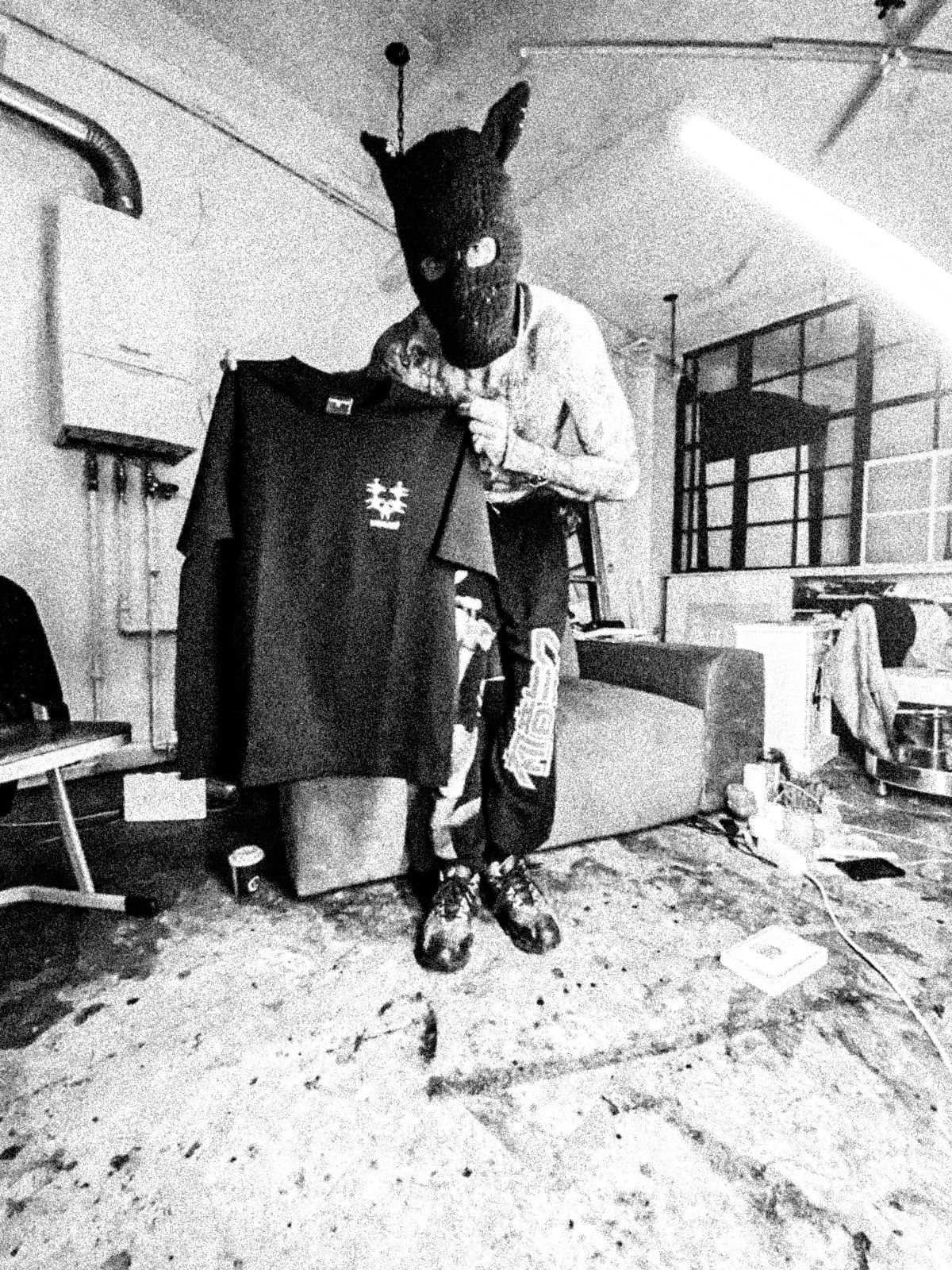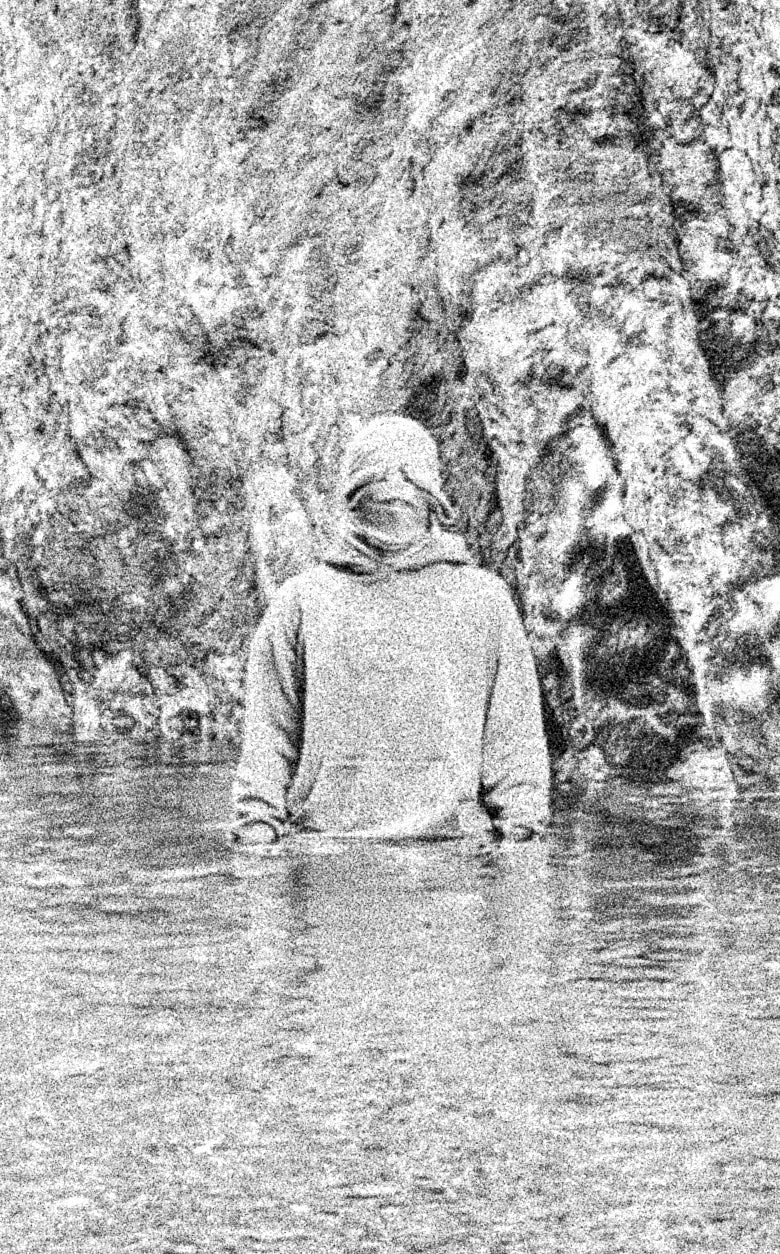
NUMERO DIECI - URBEX
We connect with Urbex via video call, he has been living outside of Italy for years. At the moment, he is in Spain for an artistic residency. He is exploring the construction sites of the Y Basca, the Nord part of the Spanish high-speed line, a huge infrastructure under construction, with viaducts and galleries. This interest shouldn’t come as surprise, given his tag. But lets go with order:
How did you start?
My very first contact was in middle school, when a classmate I was skating with gave me a spray can, encouraging me to make a tag behind the skatepark. I still remember his prophetic comment: “wow, your first tag with a spray can, you’ll have a long graffiti career!”.
I lost touch with him and for some times I didn’t know any other people interested in graffiti, so I started hanging out on a forum, Graffiti Forum Community. I learned graffiti there, around 2007/2008. I was doing sketch battles, trying to make wild styles, and people was commenting not to put too many random loops. Gradually I involved classmates and I got to know other writers in real life. At the beginning it was just matter of Uni Posca tags on benches, then the first pieces, and from 2009 I started with more consistency.
And what did you write?
I had a name as a kid, then I got caught and I changed it. When I got caught, all my friends I was painting with at the time quitted, and I - even if I was the only busted one - was the only one who continued. Later on I started to hang out more in Milan and I got in touch with what became my crew. When we started to write W*, I stopped using a personal name and for many years I only pushed the crew name. I got back having my own name only since couple of years.

Why did you choose not to have a personal tag?
In part was paranoia. In Milan it was times of investigations, and I felt more safe without a name. But actually I was enjoying doing combo pieces and quick actions, one does the sketch, one does the background, I Iiked that collective aspect, where the action and the group coordination are more important than the outcome itself. Actually I did also have a parallel name, I was using do to experiments with style, specially in abandoned places, but now I don’t write it almost anymore.
The pieces in the magazine are often painted by yourself, is a bit of the opposite of when you were doing collabos with your crew!
Yeah, is true! I changed a lot in terms of approach, and I like to go back and forward between different attitudes. I tent to adapt to the context and to who I am with, and same goes for the style: I try not to sit too much on a style but rather trying every time a different sketch, adapting to the situation. I also really like to paint solo. When you are by yourself, you know what you are doing, you see when you are seen, whereas with many people is harder to keep everything under control. But other times is just about being greedy, if there’s a spot where only one piece fits, I just go for it by myself!


You have been for some time in the Netherlands, how did it impact your approach?
Definetely. I got to know people with different ways. When I was in Italy, I was almost only interested in trains, I felt like painting walls was a waste of paint, whereas abroad I gradually got interested in different kinds of spots. Maybe because I was in a place where I didn’t know anyone, and I wanted to get up, so I started from the territory. I got to know friends with weird styles and a different approach to what I was used to, and surely I got influenced. From there my second crew was born, N*.
Who for example?
There would be too many people to mention, and many changed a lot of names, I prefer to keep it vague. We got to know each other in the surroundings of various academies between Belgium and the Netherlands. You can immediately spot which writers did art school! A friend bought an old PS2 and we were playing Need for Speed Underground, it started like this and it grew organically through travels and friends of friends. Also, some have a passion for speed, so that was it.
I see it bringing forward a different approach to the canonic graffiti writing, which obviously reflects on the style. How was the situation in the Netherlands?
It can be said that we developed in reaction to the dutch scene. In general lines (of course with exceptions), contemporary dutch scene is very conservative. In terms of surfaces, a lot of panels, trackside and highways, whereas there’s not much streetbombing because there is a lot of buff, and people is more confrontative than, for example, in Paris, where nobody cares when you paint daytime. Stylistically, I there is a bit of stagnation, as if everybody repeats the same format with the autopilot. “Well done graffs”, clean and simple pieces, with more or less the same lettering at the base, so over time it gets boring. If our crew was born in Paris or Berlin maybe it would have been one among the others, but in the Netherlands we have been more of a punch in the eye.

In the magazine there are many pieces painted from the inside of glass building.
It’s something I learned in the Netherlands, where is common to paint like this along the highways, because the borders are made of glass, and you can safely paint pieces from the backside in the daytime. In Belgium I found many empty buildings with big windows in the city center, so with that technique I could paint with ease places that in the day will be very visible. For example the one in the magazine, I’m sad that it lasted less than one month. It was close to central station, in front of an installation with the flags of Buren. Maybe I flew too close to the sun!
Also Life spoke about liminal spaces, does this imagery reflects in the way you paint? Did it make you paint in a different way?
Surely yes, but not necessarily in a stylistic way. For me, the choice of where to be present and which surfaces to hit is as important as their style, in defining the character of a writer. In general, liminal spaces are part of every writer’s experience, and one of the reasons why I started to write this name was that I wanted to emphasize this relation between graffiti and the “terrain vagues” of the cities. Of course also in terms of style I sometime get inspired to the shapes of infrastructural elements, but the relation with the city also reflects in the materials. I like to use found paint with rollers and brushes, a bit because I’m a cheapskate, and don’t want to spend 30 euros every time I wanna do a piece, but also because I like the idea to find free paint in the street and put it back in a new form, a sort of circular economy. I like to paint those kind of places that initially you wouldn’t think of as spots, or those that are hard to get to but, once there, are very chill, for example because they are in a dark corner in the night but very visible in the day. I often prepare the sketch directly having the spot in mind, I rarely go out without a clear idea of where and what I want to paint.

Do you like to climb?
Ish, I don’t do this kind of mega life-risk climbs, but I do some mini life-risk climbs ahaha
Among the pictures you sent, there is a carved tag, cool!
I premise that I have the worse handstyle in the scene ahaha but yes that tag is on top of the chimney of a thermoelectric central, which is also the highest point of Amsterdam. Technically, that’s the highest tag of the city! Anyways is just carved with some keys on some porous insulating material. There were also a few carvings from workers in the 80’s.
But actually, what did you do in the magazine? The images are very weird, a bit disorientating.
That was my intent, the images in the magazine are almost all photoeditings, I dusted off some old lesson of photoshop. I wanted to give a bit of a dreamy effect, combining pictures of pieces with other photographies from various explorations. I didn’t wanna totally destroy the photographic frame with extreme collages, but at the same time I wanted to avoid the classic grid of graffiti magazines. The inspiration came from the image that
then became the cover, a picture that I shot to a door in the airport of Palermo. That surreal overlapping of images sparked me the idea of playing with this effects of pictures within the pictures. With this editing I wanted to emphasise the attention towards the surroundings of the pieces, making the images less immediate to decipher, so that the viewer should spend some more time on the images to understand what they are looking at.
The next phone call that we get from Urbex comes on the 16th of November at 7PM o’clock. We are at The Graffiti Bench in Bologna where we organised the launch of his zine. He couldn’t come, he was still in Spain for the residency, but we decided to prepare a live painting in the window anyway - on a Telegram videocall, from a bridge of the Y Basca.

